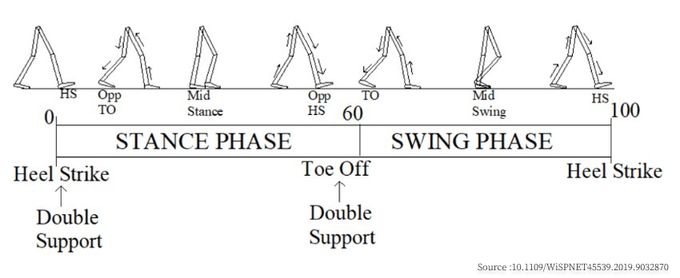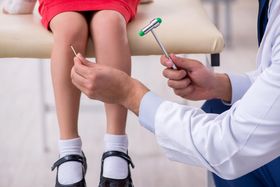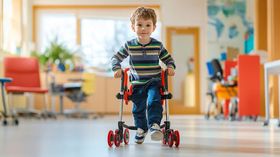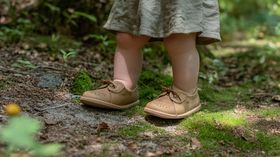How to Identify Early Signs of Foot Drop in Children
Early detection is key for timely intervention and improved outcomes
Updated February 28, 2025
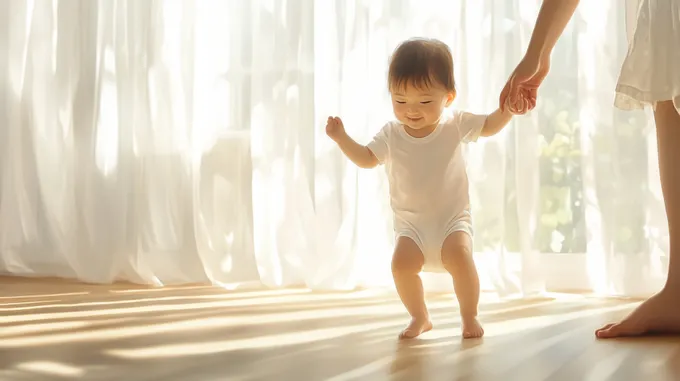
As a parent, you're always on the lookout for your child's developmental milestones. But have you noticed any changes in how your little one walks? If your baby or toddler is dragging one foot while walking, it may be a sign of foot drop
One condition that can affect a child's gait is foot drop, which impacts their ability to lift the front part of their foot. If left untreated, foot drop can increase the risk of falls, reduce participation in physical activities, and potentially lead to long-term musculoskeletal problems.
Early detection of foot drop is crucial for effective treatment. Let's explore the signs, symptoms, and management options to ensure optimal care and development for your child.
» Give your kid comfort and mobility with shoes designed for foot drop
What is Foot Drop?
Foot drop is a condition where a person has difficulty lifting the front part of their foot. In kids, this can significantly affect their movements and overall comfort. Foot drop can affect one foot or both feet, although it's more common to see it affect just one side.
The most common causes are either neurological or muscular, often resulting from:
- Damage to the peroneal nerve in the leg
- Weakness in the tibialis anterior muscle
- Motor neuron disorders
- Nerve root injuries
What Does Foot Drop Look Like in Babies, Toddlers, and Older Children?
Kids with foot drop may drag their toes across the ground or bend their knees more to lift their feet higher. This walking pattern, known as "steppage gait," can make it difficult for children to walk easily and maintain balance, impacting their independence and physical activity.
» Explore these common reasons your toddler's feet might hurt
Early Signs of Foot Drop in Toddlers and Older Kids
Identifying the early signs of foot drop in children requires careful observation of their movement patterns, from crawling to walking. Here's what you should look out for:
1. Unusual Crawling Pattern
If your baby is still crawling, pay close attention to their style. Kids with foot drop may have an asymmetrical crawling pattern. You might notice that one knee touches the ground while the other leg stretches out.
This can cause one foot to consistently lag or scuff against the floor as they move. This unusual pattern may indicate that they're having difficulty controlling one of their feet.
» Support their first steps with the best supportive shoes for pre-walkers
2. Baby Dragging One Foot While Learning to Walk
As your child starts walking, observe their gait closely. If they are walking on toes or dragging one foot, these could be early signs of foot drop.
You might also see your child exaggeratingly bending their knees and lifting their feet higher than usual with each step. This helps them avoid tripping over their toes.
» Check out whether you should buy orthopaedic shoes
3. Foot Slapping
Another telltale sign of foot drop is a distinctive sound as your child walks. Listen for a slapping noise when their foot makes contact with the ground. Children with foot drop can't control the landing of their foot. Instead of the typical heel-to-toe motion, the entire foot may hit the ground at once, creating a slapping sound.
» Support your child's adventures with shock-absorbing shoes
4. Walking on the Side of the Foot
Watch for any unusual foot positioning. If your baby or toddleris dragging one foot while walking, this could be an early sign of foot drop.
This compensation helps them avoid dragging their toes but disrupts the foot's natural alignment. Over time, this can lead to balance issues and decreased confidence in movement.
5. Unsteadiness and Balance Problems
Foot drop can significantly impact a child's overall stability. Your child might have difficulty maintaining a natural walking rhythm, seem unsteady on their feet, and have an increased chance of tripping or falling.
This unsteadiness happens because foot drop disrupts the normal gait cycle, affecting the body's balance.
6. Uneven Movement
Pay attention to differences in how your child's left and right sides move. Foot drop often affects one side more than the other, leading to asymmetrical movement.
You might notice that one foot consistently behaves differently from the other during walking or running. This can also manifest in uneven wear patterns on shoes, with one shoe showing more wear at the toe than the other.
» Find out how to prevent injuries in children
Best Shoes for Foot Drop in Toddlers and Children: What to Look For
While not a cure for foot drop, appropriate footwear can be crucial in managing the condition and improving a child's mobility and comfort. The right shoes can provide much-needed support and help compensate for the weakness caused by foot drop.
Look for shoes with the following features:
- Lightweight Design: This helps reduce the effort required to lift the foot.
- Firm Heel Counter: This provides stability and helps align the foot.
- High and Wide Toe Box: This accommodates orthotic devices and prevents toe dragging.
- Adjustable Closures: These allow for a snug, customised fit.
- Non-Slip Soles: These provide better traction and reduce the risk of falls.
- Arch Support: Proper arch support helps distribute weight evenly, reduces strain on the foot muscles, and provides additional stability for children with foot drop.
Some specialised shoes are designed specifically for children with foot drop. These may include features like built-in ankle support or a slightly elevated heel to compensate for the inability to lift the front of the foot.
When to Seek Medical Attention
If you see any of these signs, consult a paediatrician or a specialist in child development. Early intervention can prevent these habits from sticking and help avoid complications like stiff joints, muscle imbalance, and reduced mobility.
To check for foot drop, doctors may:
- Do a physical examination, looking at how your child's foot moves while walking
- Run tests like MRIs, nerve conduction studies (NCS), or needle electromyography (EMG)
- Ask about your kid's medical history, including autoimmune diseases and nerve problems
Treatment may include physical therapy to strengthen muscles, neuromuscular re-education techniques, braces or splints for support, and, in some cases, surgical intervention. If foot drop is due to an injury, addressing it within 72 hours of the trauma is crucial for the best outcomes.
» Check out how to treat flat feet in kids
Addressing Foot Drop Early On
Foot drop, while concerning, is not a rare condition. By staying vigilant and identifying these early signs, you can ensure your child receives timely care and support. With proper intervention and support, children with foot drop can learn to walk confidently and enjoy a full range of activities.
Trust your instincts as a parent, and don't hesitate to seek professional advice if you have any concerns about your child's gait or foot control.
» Support your child's development with shoes that address foot drop
You might like these shoes:
Disclaimer: First Walkers' information is intended for educational and informational purposes related to toddler footwear and feet. We encourage you to consider individual circumstances and consult qualified orthopaedists about specific conditions.
